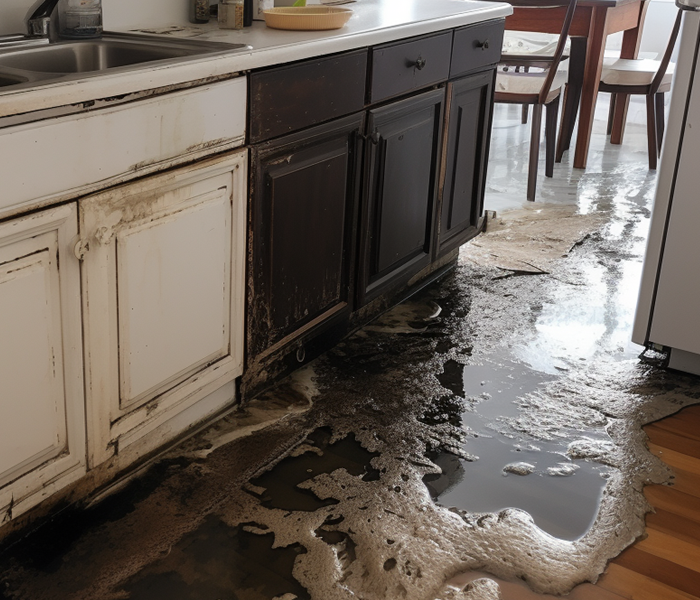Understanding, Preventing, and Responding to Water Damage
1/11/2024 (Permalink)
Water damage is a silent menace that can strike homes and businesses without warning, causing extensive and costly destruction. From leaky roofs to burst pipes, understanding how water damage can occur is the first step towards prevention.
To break this down a bit more, let's explore common causes of water damage, provide tips for avoiding such incidents, and outline essential steps to take if water damage does occur.
Common Causes of Water Damage:
Leaky Roofs and Foundations: Over time, wear and tear or severe weather conditions can compromise the integrity of roofs and foundations, leading to leaks.
Plumbing Issues: Burst pipes, faulty appliances, and leaking fixtures are common culprits of water damage, particularly in older homes or those with outdated plumbing systems.
Appliance Failures: Dishwashers, washing machines, water heaters, and refrigerators can malfunction, causing water to leak and damage surrounding areas.
Storms and Flooding: Severe weather events, including heavy rainfall and floods, can overwhelm drainage systems and infiltrate buildings, causing significant water damage.
Tips for Avoiding Water Damage:
Regular Maintenance: Schedule routine inspections for roofs, foundations, and plumbing systems. Address any signs of wear or damage promptly.
Appliance Vigilance: Regularly check for leaks or malfunctions in appliances, ensuring proper maintenance and timely repairs.
Proper Insulation: Adequate insulation in attics, basements, and crawl spaces can prevent pipes from freezing and bursting during colder months.
Landscaping: Proper grading around the property can direct water away from the foundation, reducing the risk of flooding.
Steps to Take After Water Damage:
Assess the Situation: Safety first – turn off electricity if it's safe to do so. Assess the extent of the damage and document it for insurance purposes.
Contact Professionals: For thorough water extraction and drying, contact SERVPRO Team Shaw, a trusted emergency water restoration company in the DFW area.
Remove Water: Use a wet/dry vacuum or mop to remove standing water, and open windows to increase ventilation.
Salvage Belongings: Move valuable items to a dry area to prevent further damage.
Document Damaged Items: Take photographs and videos of damaged belongings for insurance claims.
SERVPRO® Team Shaw: Your Trusted Partner in Emergency Water Restoration:
SERVPRO Team Shaw understands the urgency of water damage and offers prompt and professional services to residents and businesses in the DFW area. Our experienced team utilizes advanced equipment to efficiently extract water, dry affected areas, and restore properties to their pre-damage condition.
Water damage is a formidable adversary, but with awareness, proactive measures, and the assistance of professionals like SERVPRO Team Shaw, you can protect your home or business from its destructive impact. By implementing preventative tips and knowing what steps to take in the aftermath of water damage, you can safeguard your space and embark on the path to a swift and effective recovery.






 24/7 Emergency Service
24/7 Emergency Service
